The Enchanting World of the White Canary Bird: A Bird Lover Guide
Get ready for an adventure of a lifetime as I take you on a journey to explore the white canary birds and the enchanting world it resides in!
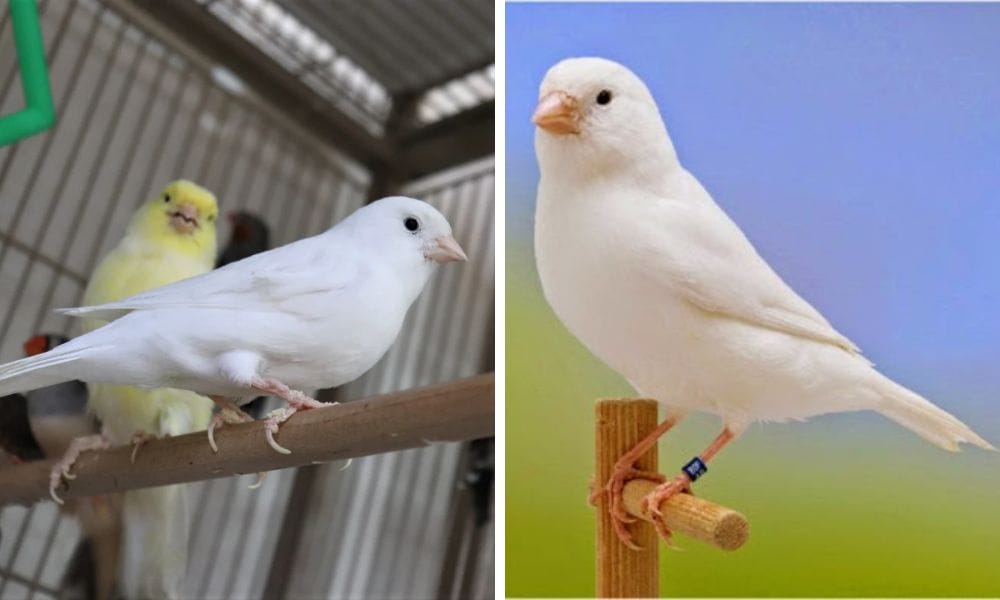
Key Takeaways:
- Understand the genetic intricacies behind the white canary bird’s pure and captivating color.
- Discover the differences between dominant and recessive white canaries and their breeding patterns.
- Learn about the care requirements and the importance of vitamin supplements for maintaining the health of white canary birds.
The white canaries are fascinating creatures, they are small songbirds that have captured the hearts of bird enthusiasts and pet owners alike. With its pure white feathers and melodious song, it’s no wonder that this bird has become a popular choice for those looking to add a touch of elegance to their aviaries. The white canary is a variety of the domestic canary, which was originally derived from the wild canary and has been bred in captivity since the 17th century. Through careful selection and breeding, what was once a rare and expensive bird became more accessible, allowing more people to enjoy their beauty and song. Today, there is an abundance of white canaries in captivity, as their numbers have greatly increased over time, making them widely available to enthusiasts.
But what exactly makes a white canary distinguished from its colorful counterparts, and what unique qualities set it apart?
A Glimpse into the White Canary: Introduction and Origins
The White Canary, a cherished member of the finch family, traces its roots back to the Macaronesian Islands, most notably the Canary Islands, where the wild canaries first flourished. These wild canaries, with their vibrant songs and lively presence, captivated early explorers and breeders, sparking a fascination that would lead to centuries of selective breeding. The first documented appearance of a white canary dates as far back as 1677, marking the beginning of a new chapter in aviculture. At that time, white canaries were considered exceptionally rare, and their scarcity made them highly prized, often fetching impressive prices among collectors and enthusiasts.
As interest in these unique birds grew, breeders dedicated themselves to refining and increasing the population of white canaries. Through careful selection and breeding, what was once a rare and expensive bird became more accessible, allowing more people to enjoy their beauty and song. Today, white canaries are celebrated for their distinctive appearance and melodious voices, making them a popular choice for pet owners and breeders alike. The journey of the white canary from a rare curiosity to a beloved companion is a testament to the creativity and dedication of breeders, as well as the enduring appeal of these enchanting birds. Their story is a vivid example of how human intervention and selective breeding can create remarkable variations within the world of domesticated birds.
The Genetics of White Canaries: Dominant vs. Recessive
The white canaries are members of the finch family originating from the Macaronesian Islands, including the Canary Islands. Unlike the domesticated variants, the wild canary exhibits a range of color variations due to different genetic pigmentation. The term “white canary” encompasses both dominant white canaries and recessive white canaries, each with its unique genetic makeup. The dominant white gene is an incomplete dominant, meaning that only one gene is needed to produce the white coloration. These birds often exhibit slight shading or may have colored eyes, as opposed to the pink eyes typically seen in albinos.
On the other hand, recessive white canary carry the recessive white gene, which masks any other color the bird might have. This gene must be present in both parents to produce a recessive white offspring. White coloration occurs in both dominant and recessive genetic forms, so it can be seen in birds with either type of gene. These birds are often pure white, with no shading, and may also have pink eyes, although they are not true albinos. The recessive white gene affects the pigments in the bird’s feathers, making breeding for this color more challenging, as both parents must carry the gene to have a chance of producing white offspring.
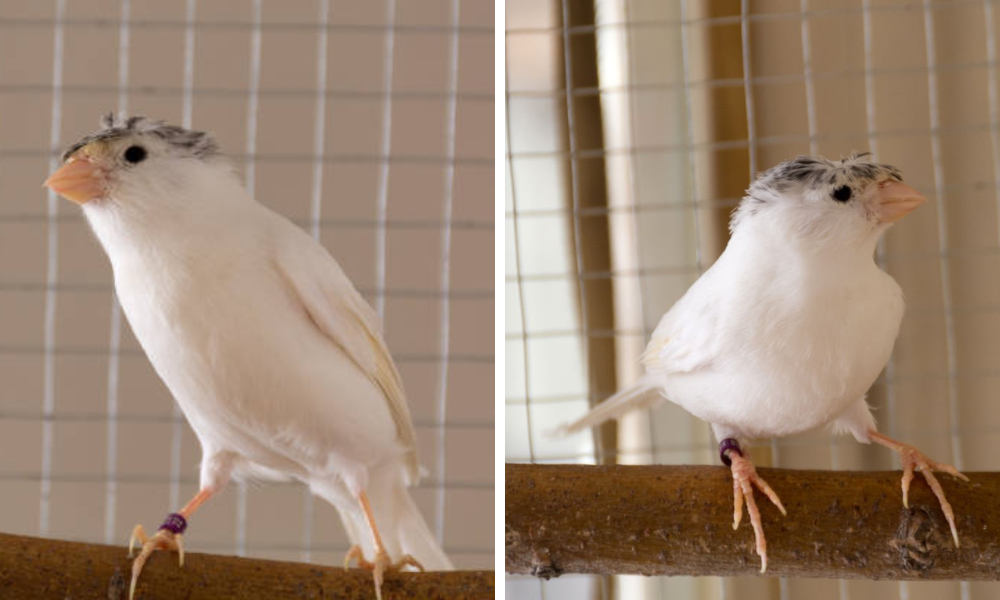
Canary Colors and Variations
Canary colours range from the wild canary’s green and brown shades to the vibrant Canary Yellow, red factor canaries, and even blue and orange varieties. Yellow lipochrome is one of the key components that contributes to the wide diversity of colours seen in these birds. Lipochrome red and lipochrome yellow are key colour factors that contribute to the diverse colourations and plumage variations found in canary birds. There is significant natural variation in canary colour due to genetic diversity and pigment levels. Colour canaries are bred specifically for their plumage, and the white canaries are no exception. Variegated birds, which display patches of colour against a white background, are also popular among breeders. These variegated canaries unleash a kaleidoscope of colours, with single genes determining the melanin variety in the feathers. Melanin not only affects the overall colour but also creates distinctive markings and patterns, especially on the wings and body.
The recessive white mutation is particularly interesting because it can hide other colours. For example, a bird that appears pure white may be a yellow carrier, meaning it has the genetic material for yellow plumage, but the recessive white gene masks it. This can lead to surprises when breeding, as pairing two white birds might produce offspring of different colours if they carry genes for other shades. The distribution of colour and markings on the wings can also vary, adding to the visual diversity among canary breeds.

The Distinctive Beauty: Physical Characteristics of White Canaries
White canaries are instantly recognizable for their elegant and pristine appearance, a result of unique genetic factors that influence the presence or absence of pigments such as yellow lipochrome, black pigment, and melanin. The dominant white canary, in particular, stands out with its pure white plumage, which often shimmers with a subtle silvery sheen under the right lighting. Some individuals may display a faint yellow tinge on the shoulders or along the edges of their flight feathers, adding a delicate warmth to their otherwise snowy appearance. This touch of color is due to the presence of yellow lipochrome, which can sometimes peek through even in predominantly white birds.
The beak of the white canary is typically well-shaped and proportionate, complementing their compact size—most white canaries measure around 5.5 inches in length. Eye color can vary, ranging from dark to pink, depending on the amount of melanin present, which also influences other subtle features in their appearance. Maintaining the health and luster of their feathers is essential, and this is best achieved through a balanced diet rich in canary seed, egg food, and fresh vegetables. Regular grooming and proper nutrition help preserve the silvery brilliance of their plumage, ensuring that these birds remain as striking as they are healthy. The combination of their refined color, graceful form, and shimmering feathers makes white canaries a favorite among bird lovers and breeders who appreciate their unique beauty.
Charming Companions: Behavior and Temperament
White canaries are more than just beautiful birds—they are delightful companions known for their gentle and affectionate temperament. These birds thrive on social interaction, both with other canaries and with their human caretakers, often responding positively to gentle handling and regular attention. Their melodious song is one of their most endearing qualities, filling homes with a cheerful and soothing sound that has made canaries popular pets for generations.
In captivity, white canaries are relatively easy to care for, provided they receive a balanced diet, a clean living environment, and opportunities for social engagement. They tend to be fertile and breed readily, with breeders often pairing different types—such as dominant white canaries and recessive white canaries—to create new and exciting color variations. This willingness to breed and the genetic diversity among parents have led to the development of many unique canary types, each with its own charm and appeal.
The popularity of white canaries extends far beyond their native regions, with enthusiasts in England, Australia, and around the world cherishing these birds for their beauty, song, and companionship. Their ability to adapt to human presence and respond to care makes them a beloved addition to any household. Whether admired for their appearance, their song, or their friendly nature, white canaries continue to enchant bird lovers everywhere, maintaining their status as one of the most cherished members of the canary family.
Caring for White Canaries
White canaries, like all color canaries, require specific care to maintain their health and vibrant plumage. Vitamin supplements are particularly important for white birds, as they can help prevent health issues and enhance the bird’s overall condition. Light can affect the perception of feather texture and color, making it an important factor in identifying various feather types. A balanced diet, rich in nutrients, is essential for these birds, and many owners opt to provide a mix of seeds, fruits, vegetables, and specially formulated canary food.
In addition to a nutritious diet, white canaries need a clean and spacious environment. Their cages should be kept in a well-lit area but out of direct sunlight, which can cause discomfort and overheating. Regular cage cleaning is crucial to prevent the spread of disease and to keep the canaries’ white feathers from becoming soiled.
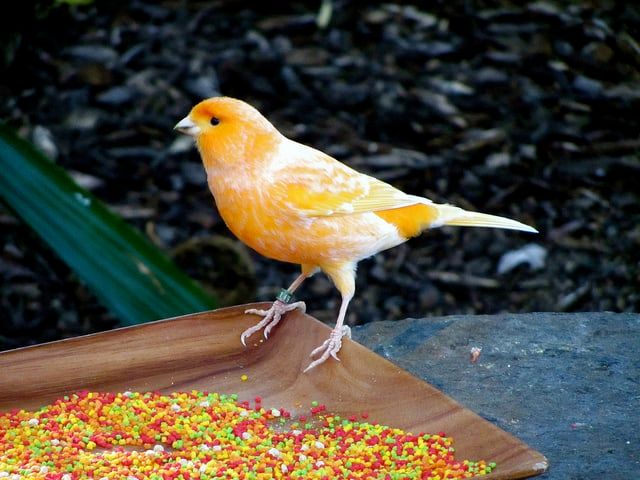
Health and Wellness: Ensuring a Vibrant Life
Ensuring the health and wellness of white canaries is essential for allowing these enchanting birds to thrive, whether they are admired for their song or their striking appearance. Originating from the Canary Islands, white canaries—especially the dominant white canary—have become beloved pets in England and around the world, thanks to their unique color variations and gentle temperament. Their popularity has brought increased attention to the importance of proper care, nutrition, and responsible breeding.
A balanced diet is the cornerstone of a vibrant life for white canaries. These birds are granivores, so high-quality canary seed should form the basis of their daily meals, supplemented with fresh vegetables, fruits, and protein-rich egg food. The addition of cuttlebone provides essential calcium, supporting strong bones and healthy egg production during breeding. Because white birds, including those with recessive white or dominant white genes, may lack certain pigments like melanin and yellow lipochrome, they can be more susceptible to health issues. This makes it even more important to provide a nutrient-rich diet that supports feather quality, immune function, and overall vitality.
Genetics play a significant role in the health and appearance of white canaries. The presence or absence of pigments such as black pigment and yellow lipochrome not only determines their beautiful plumage but can also influence their resilience. For example, albino canaries, which lack melanin entirely, may be more sensitive to sunlight and require extra care to prevent stress or illness. Breeders and owners should be mindful of these genetic factors when selecting parents for breeding, aiming to maintain both the color and the health of their stock.
Beyond nutrition, a clean and stimulating environment is vital for the well-being of canaries. Regular cage cleaning, access to fresh water, and opportunities for exercise help prevent disease and promote natural behaviors. Monitoring the birds’ behavior, appetite, and feather condition allows for early detection of potential health concerns, ensuring prompt care and intervention when needed.

Responsible breeding practices are also crucial for the continued existence and vitality of white canaries. By selecting healthy parents and maintaining genetic diversity, breeders can help prevent inherited health problems and support the long-term wellness of their birds. This commitment to health extends the lifespan of canaries in captivity, with many living 10 years or more when provided with attentive care.
Ultimately, the vibrant life of a white canary is a reflection of the care, knowledge, and dedication of its owner. By understanding the unique needs of these beautiful birds—shaped by their genetics, diet, and environment—bird lovers can ensure that their canaries continue to enchant with their song and silvery plumage for years to come.
The Intricacies of Color Breeding in Canaries
When it comes to breeding for that perfect hue, the dominant white canary often takes center stage. Unlike their recessive white counterparts, these birds carry a powerful genetic punch that ensures their snowy plumage is passed down more consistently. It’s a fascinating dance of genetics where breeders meticulously pair birds to achieve that pristine white bird look. Crossing different pigment genes can result in new color variations, allowing breeders to expand the range of canary colors available. But it’s not just about the feathers; breeders also pay close attention to the color of the legs and skin, aiming for a clear canary that meets the highest standards of color bred enthusiasts.
Historically, hens played a crucial role in the breeding process. Italians obtained hens to establish a population conducive to selective breeding, which contributed to the development of various canary breeds and their popularity in Europe. Over time, specific color phases such as Norwich yellow and green were developed through careful selection and breeding practices.
In the world of color breeding, yellow carriers play a crucial role. These are the birds that may not display the desired white coloration themselves but carry the genes that can produce white offspring when paired correctly. It’s a strategic game of mix and match, where breeders often divide their aviaries into sections for each color variety. Birds are organized into categories based on traits for breeding or show standards, helping breeders maintain desired characteristics. This meticulous approach ensures that the clear birds are not accidentally paired with, say, black canaries, which could result in mixed or dark offspring, moving away from the sought-after pure white lineage.
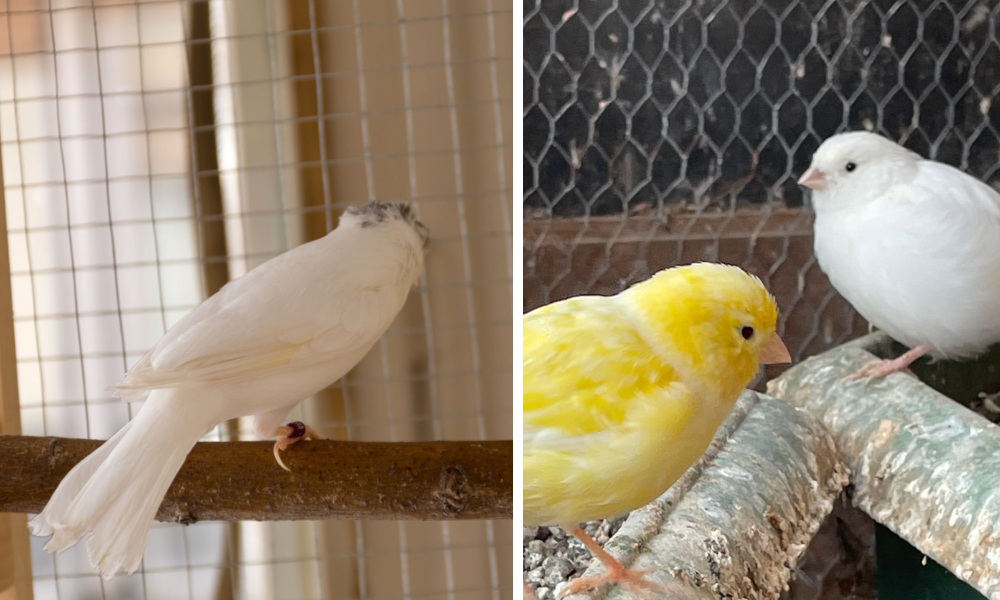
The Role of Gender in Canary Breeding
When breeding canaries, the gender of the birds is a critical factor to consider. Females, in particular, are often the focus as they are the ones to carry and hatch the eggs. However, it's not just about the reproductive role; the color and genetics of the females are equally important. For instance, a dominant whitecanary female paired with a recessive white male may yield different results compared to the reverse pairing. Breeders must be knowledgeable about these dynamics to effectively produce the desired white offspring.
Moreover, the division of breeding pairs is sometimes based on gender, with females of particular color traits being paired with males carrying complementary or desired traits. This is especially true when breeders aim for clear birds with no hint of dark or unwanted coloration. The legs and skin color can also be influenced by gender-specific genetic traits, making the selection of the right pair a complex but intriguing aspect of canary breeding. By understanding these nuances, breeders can enhance their chances of producing healthy, vibrant, and color-true canaries.
Breeding White Canaries
Breeding white canaries can be a rewarding experience, but it requires knowledge of genetics and careful selection of breeding pairs. When breeding dominant white canaries, only one parent needs to carry the dominant white gene to produce clear canaries. However, breeding recessive whites is more complex, as both parents must carry the recessive white gene to have a chance of producing pure white offspring.
Compared to other species, white canaries have unique breeding practices that require specific genetic knowledge. It’s also important to note that breeding two recessive white canaries does not guarantee all-white offspring. The genetic material from both parents can result in a variety of colors, depending on what other color genes the birds carry. Breeders often keep detailed records of their birds’ genetic backgrounds to predict the colors of future generations.
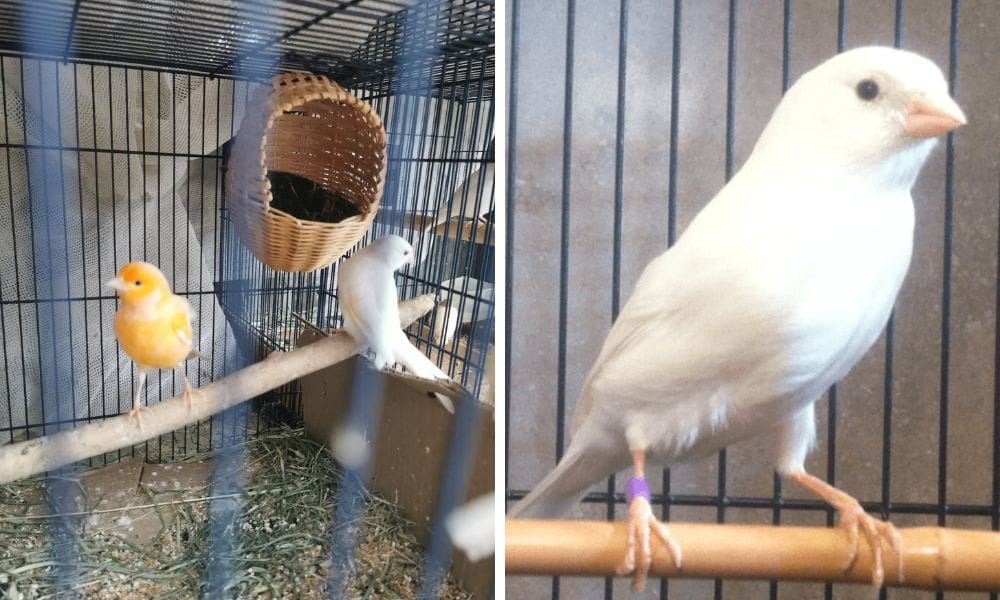
The Importance of Genetic Diversity
While breeding for specific colors like white is a common practice, it's essential to maintain genetic diversity within the canary population. Focusing solely on color can lead to inbreeding, which may cause health problems and reduce the birds' overall vitality. Responsible breeders will often introduce new genetic material into their breeding programs by pairing birds from different lines or with different color backgrounds.
This practice not only helps to preserve the health of the canary population but also creates the potential for new color variations. With each pairing, there's a chance of producing offspring with a new color combination, adding to the already rich tapestry of canary colors.
The Allure of the White Canary
The white canary, with its serene beauty and charming song, continues to be a favorite among bird lovers. Its striking appearance, combined with the complexity of its genetics, makes it a fascinating subject for both casual owners and serious breeders. Whether admired in an aviary or singing from a cage in a living room, the white canary is a testament to the diversity and wonder of the avian world.
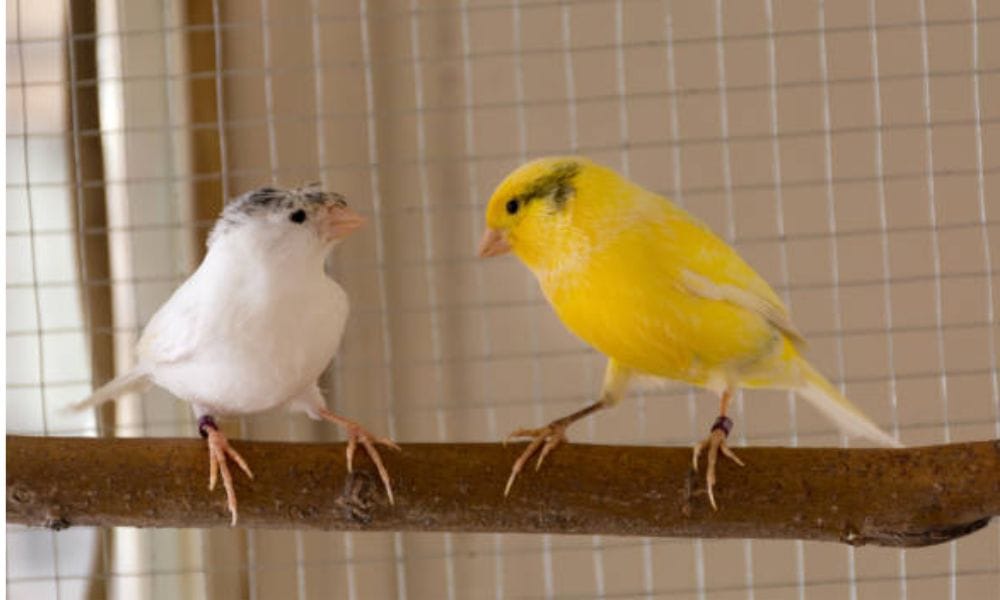
Summary
The white canary is a captivating species, known for its pure white plumage and delightful song. With a complex genetic background, these birds come in two main types: dominant white canaries and recessive white canaries. Caring for these birds requires a nutritious diet, a clean environment, and an understanding of their specific needs. Breeding white canaries can be challenging but rewarding, with the potential to produce a variety of colors due to the hidden genetic material. Maintaining genetic diversity is crucial for the health and vitality of the canary population.
FAQ Section
Q: Can two white canaries produce offspring of a different color? A: Yes, if both white canaries carry genes for other colors, their offspring may display those colors due to the recessive white gene masking the underlying pigment.
Q: Are white canaries albino? A: Not necessarily. While some white canaries may have pink eyes, which is a characteristic of albinism, many have colored eyes and slight shading, indicating they are not true albinos.
Q: Is it difficult to breed white canaries? A: Breeding white canaries, especially recessive whites, can be more challenging than breeding other colors because it requires both parents to carry the recessive white gene. However, with knowledge of genetics and careful selection of breeding pairs, it is possible to successfully breed white canaries.

